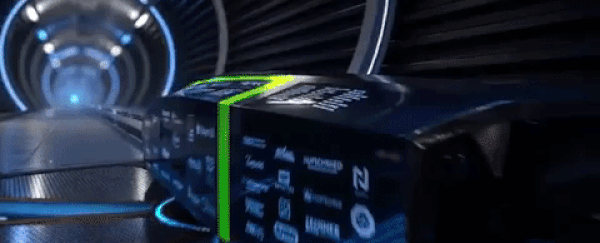We're yet to see any Hyperloop tracks open to the public, but the futuristic, high-speed travel technology continues to develop at a rapid pace – and a team from the Technical University of Munich (TUM) in Germany just set a new speed record for Hyperloop travel.
The top speed of 463 km/h or 288 mph was hit at the annual SpaceX Hyperloop Pod Competition, where engineers battle it out to come up with the fastest possible pod designs and methods for propelling them forward.
These designs have to fit in with the overall Hyperloop vision – a sealed tube that's able to fling passengers from starting point to destination without any worries about traffic congestion or adverse weather conditions.
The TUM student group - previously known as WARR Hyperloop - emerged victorious this time around, retaining their 2018 crown as makers of the fastest Hyperloop pod. They've broken their own speed record along the way, having reached 457 km/h or 284 mph last year.
While Hyperloop pods have hit higher speeds during tests, to officially log a speed record, a pod must successfully travel down a 1.6 kilometre (1 mile) test tube track up to 100 feet or a little over 30 metres from the end, then bring itself to a safe stop.
The TUM team even managed to reach speeds of 482 km/h or 299 mph during the competition, though on this occasion the pod broke up before the end, although it did put on the emergency brakes.
The target speeds for a fully functioning Hyperloop, suggested by SpaceX founder Elon Musk, are 1,200 km/h or 745 mph, so there's plenty of potential yet. At that kind of speed, you could get from Los Angeles to San Francisco in just under 30 minutes, a journey that takes almost six hours by car.
For comparison, travelling at the current record-breaking speed set by the TUM team, you'd get there in just under two hours - which is not too shabby either.
Next year the challenge is getting bigger again – competitors will have to send their pod down a curved 10 kilometre (6.2 mile) track. No doubt the TUM team will be back again to have another go.
The TUM pod, which weighs approximately 70 kilograms (154 lbs), uses a carbon fibre shell and a magnetic levitation system to keep itself buoyed above the Hyperloop track.
We are proud to finally present to you our Pod IV. This wouldn't have been possible without the support from our main sponsor, @Airbus.
— TUM Hyperloop (@TUM_Hyperloop) June 21, 2019
Thanks for believing in us one more year and being part of this amazing journey!
Photo Credits: Andreas Heddergott /TUM pic.twitter.com/DFl9FyPWI6
"You could say the pod is the result of four years of evolution," team manager Toni Jukic said in a press statement in June. "Each year we learned something new and put the knowledge into practice."
For the time being, the pods being tested are only the size of bobsleighs. Eventually these contraptions will need to be worked up into full-size people carriers, and then they can start ferrying people about.
As for when you'll actually be able to travel in a Hyperloop, a launch is some way off yet. Certain routes – like ones from Amsterdam to Paris and across Saudi Arabia – have already been proposed, but we're still waiting for construction to start.
The first Hyperloop-related route to open could well be the one underneath Los Angeles, being constructed by Musk's Boring Company. This particular implementation is designed to carry standard cars along rails rather than pods, so it's not a true Hyperloop – just a step along the way.
You can expect the SpaceX Hyperloop Pod Competition to play a major role in the development of Hyperloop tech in the future, and it's likely that we'll see that speed record broken again and again in the years to come.
